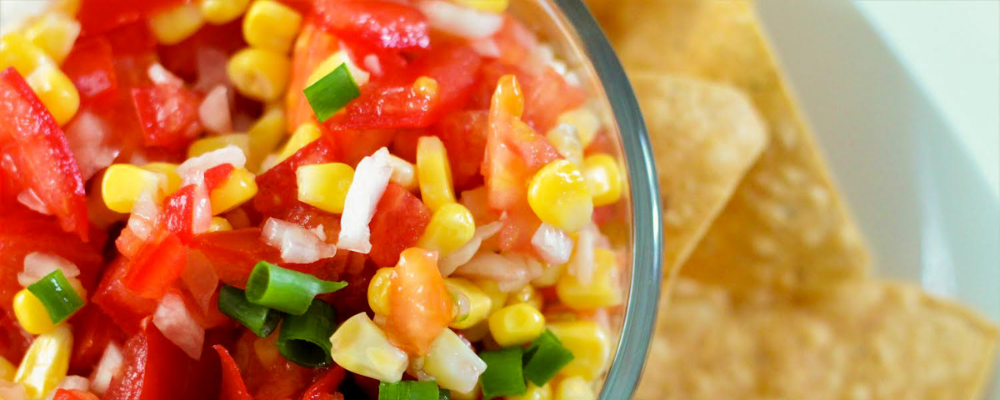
Mainely Dish: Homemade Salsa
— By Alex Gayton, Assistant EFNEP Coordinator & Social Media Coordinator, Expanded Food Nutrition and Education Program (EFNEP), University of Maine Cooperative Extension
Visit EFNEP’s recipe website for the Homemade Salsa recipe and recipe video.
Salsa is a staple condiment in many kitchens and it’s easier to make than you might think. This Homemade Salsa recipe only uses six ingredients: tomatoes, corn, onion, jalapeño peppers, lime juice, and garlic. Tomatoes are the base of the salsa and are a good source of vitamin C. The corn adds a perfect crunch and sweetness to the salsa and provides some fiber. I don’t enjoy adding “heat” to foods, so I don’t use jalapeño peppers when I make this recipe. This is one of the benefits of making your salsa, you control the ingredients. Our Spoonful Blogger, Kayla Parsons, wrote a blog called Growing Peppers, Mild to Hot! which provides more details about peppers. One important thing I learned from that blog is, “Peppers get their heat from the odorless chemical compound, capsaicin (pronounced kap-say-sn). Capsaicin can be found in the white part on the inside of peppers which the seeds are attached to.”
If you decide to use jalapeño peppers here are some tips on how to safely prepare them:
- Clean peppers when you are ready to use them by rinsing with cold running water.
- Do not touch your nose, eyes or mouth after handling hot peppers. If you do, flush with water immediately.
- Wear rubber gloves while preparing jalapeño peppers when possible.
- To decrease the heat intensity, wash peppers, cut them open and remove the seeds and the white part. Soaking cut peppers in salt water for at least an hour will help decrease the heat as well.
- When done working with hot peppers, wash hands well with soap and water.
Impress your guests by serving this vibrant and delicious salsa. It can be served as a snack, appetizer, or topping. Try using this homemade salsa recipe with Chicken, Corn, and Rice Casserole, Fajitas, or Make-Ahead Mexican Roll Ups.
Important note, this recipe is not for preserving. If you are interested in preserving salsa go to the National Center for Home Food Preservation (NCHFP) website for salsa recipes appropriate for canning and watch University of Maine Cooperative Extension’s Preserving the Maine Harvest: Salsa video to see the canning process for salsa.
